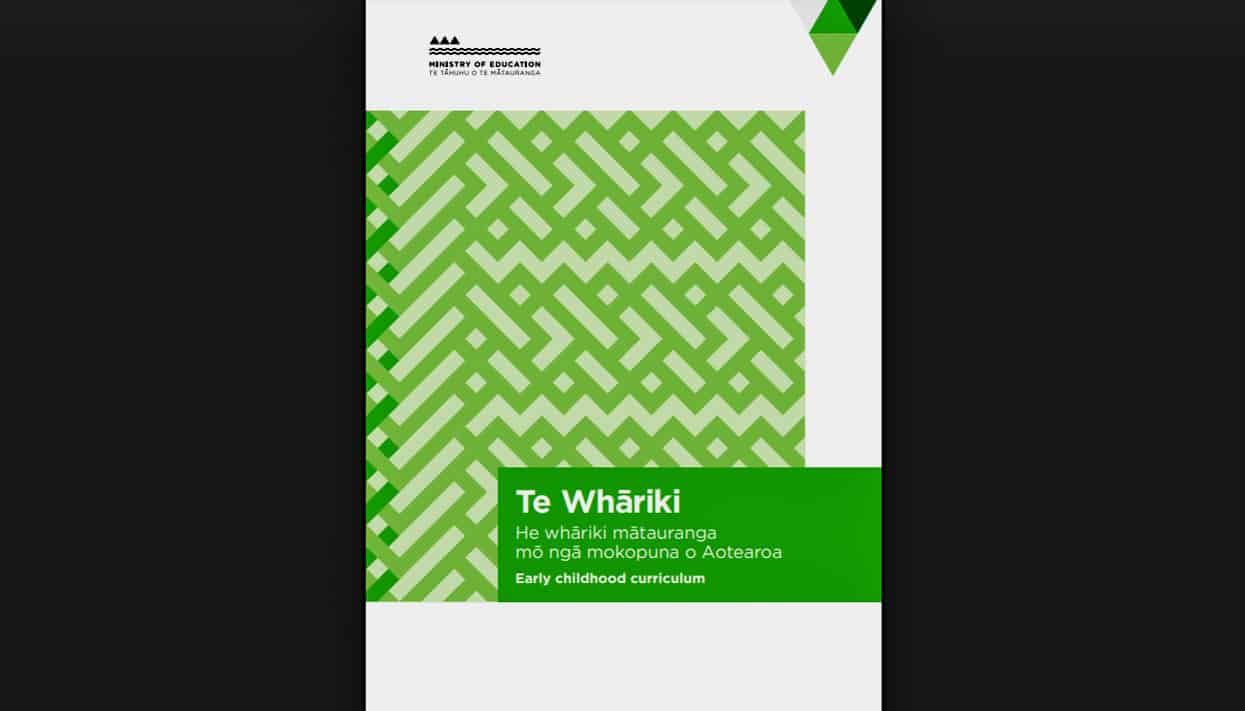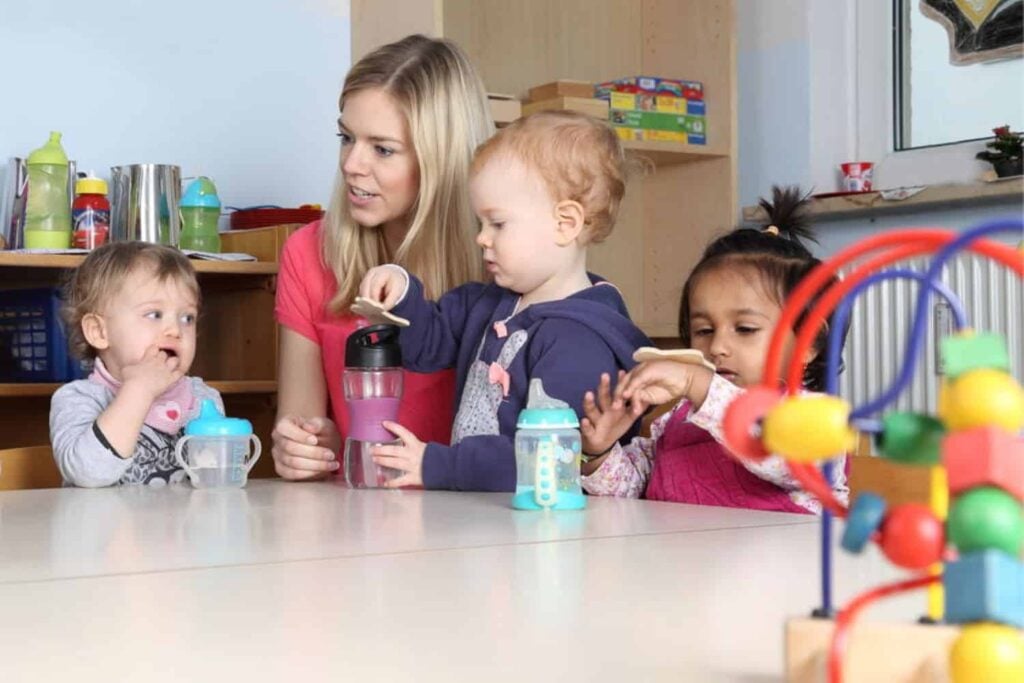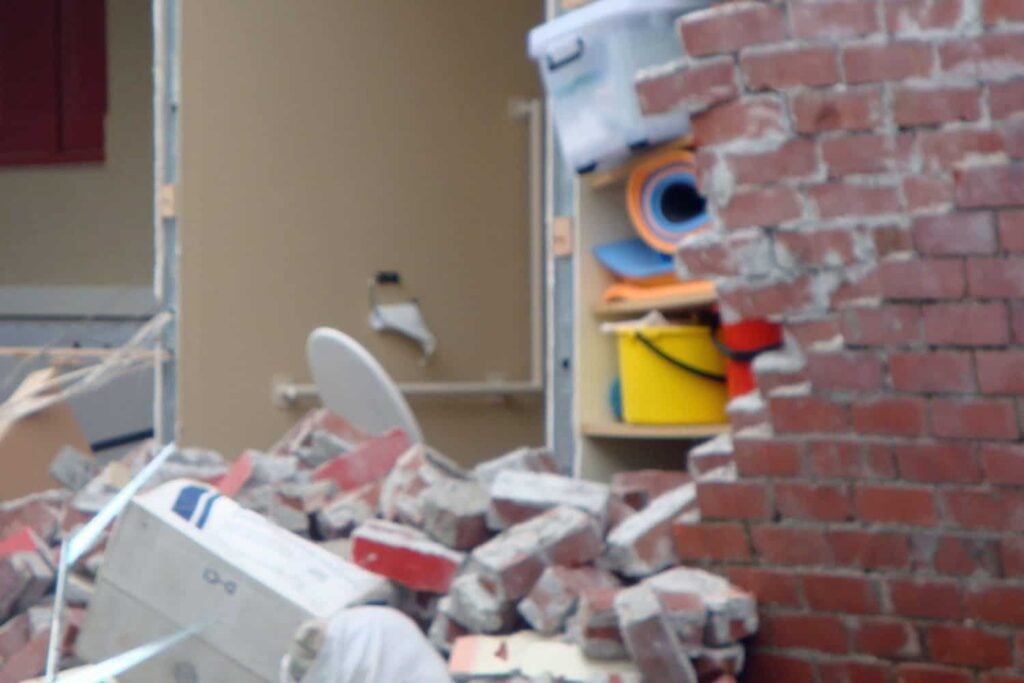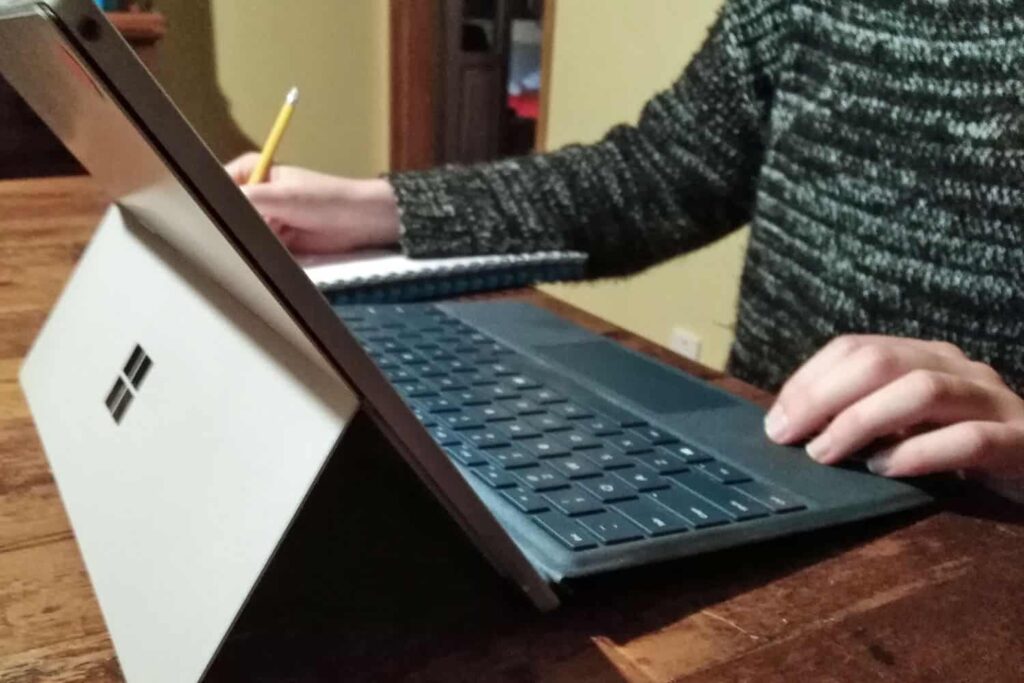By Dr Sarah Alexander.
November 28, 2016.
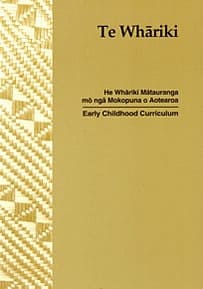
There are multiple issues for the Ministry of Education to address before it finalises a re-written Te Whāriki early childhood curriculum.
These are to do with (a) the timeline for re-writing, consultation and finalisation, (b) unconscious biases, (c) document design, and (d) document content.
Many teachers are already expressing a lack of ownership and sense of disempowerment due to the process that the Ministry of Education has undertaken. And there are other issues too, but that is enough for now.
An appropriate response by the ministry would be to postpone its planned release of the new curriculum in February next year and put time into getting it right.
Re-writing the curriculum should be approached as an iterative and inclusive process.
Background
For some years now there has been anticipation that the Ministry of Education would get around to commissioning a revision of Te Whāriki.
Nancy Bell wrote a public letter to the Minister of Education in 2014 in her role as chief executive of the NZ Childcare Association asking for a review of the curriculum to be prioritised.
Dr Ken Blaiklock led the way in providing critical analysis of Te Whariki and assessment of children’s learning. He said that the holistic and generalised nature of the curriculum risked overlooking crucial areas of learning. He suggested that we need to remain open to what can be learned from curriculum innovations in other nations. In a paper published in the NZ Research in ECE Journal, 2012 Dr Blaiklock made the argument that the Education Review Office does not really know what children are learning because it uses “evaluation indicators” of effective practice that are supportive of the use of narrative assessment or Learning Stories and such practices provide little evidence of children’s learning.
In December 2014 The Minster of Education established an Advisory Group on Early Learning to look at Te Whāriki and its relationship to the school curriculum. In June 2015 the group reported to the Minister and recommended that government “commission an update, ensuring that extensive engagement with the sector is part of the process.” It also took the position that teacher qualification and registration/certification was important and it did not want to see a dumbing down of the curriculum. It recommended that all services be required to make available teacher inquiry time equivalent to two hours’ non-contact time per qualified teacher per week and that the Ministry Education call for tenders for a major professional development initiative emphasising leadership of the implementation of Te Whāriki.
In February 2016 it was crystal clear, although it was yet to be announced, that a revision of Te Whāriki was imminent when Nancy Bell was appointed Director Early Learning after the Ministry of Education formed a new department called “Early Learning and Student Achievement”.
The name given to this new department or section within the Ministry signalled that behind the decision to re-write Te Whāriki was the Government’s and the Minister of Education’s wish to see the schoolification of early childhood education.
The ministry took control and has done the re-write itself essentially by appointing writers to work for it and having its own staff lead and run consultation meetings instead of calling for tenders and contracting this to independent writers/consultants.
Significant dates
July 25, 2016: The Ministry of Education announces it will review Te Whāriki
August 11-12, 2016: First meeting of the team of writers appointed by the ministry
November 4, 2016: Re-write of the curriculum released for consultation
December 7, 2016: The last of the Ministry’s consultation meetings to be held
December 11, 2016: The closing date for consultation stated by the Minister of Education in a press release published on Scoop
December 16, 2016: The closing date for (online) consultation stated by the Ministry of Education
Early February 2017: The date by which the Ministry intends to release the final version in hardcopy and online
Issues and comments
a) Timeline and Process
There is concern that the process has been rushed. The time-frame for the writers to meet, research, engage with other practitioners and experts (if this occurred) and prepare the draft update was extremely short and demanding of the writers for work that is so important.
Consultation has been limited to just one quick round over a short period before Christmas, with the final version of Te Whāriki scheduled to be released as schools go back in February. People who attended consultation meetings were given a colour hard-copy of the complete finished-looking update – which is good – but they could not be blamed if they got the impression because of this that the draft was pretty much set in stone.
Not all teachers knew about the consultation meetings – and communications could have been better.
The consultation has been driven by ministry staff and there appears to be limited involvement by the appointed writers.
Depending on where the teacher was located the consultation meeting offered by the ministry varied from being little more than a hello and presentation of the draft update (e.g. Gore 1 ½ hour meeting) to 3 ½ hours long in Greymouth. The times scheduled and the limited number of meetings would have affected the ability of teachers/ parents to participate, for example in the Wellington area only one meeting was held but this was in Upper Hutt city and between 3 – 6pm which is probably one of the least suitable times to hold a meeting for early childhood practitioners.
The ministry also ran an online survey but this form of consultation does not make up for what can be gained from forums for discussion and supporting practitioners to gain an understanding of the changes, engage in debates with each other and the writers/ ministry, and provide input to the writers/ ministry.
Some early childhood teachers and service providers have asked “WHY THE RUSH?”
Another way of looking at this is to ask “WHO WILL BENEFIT?”
It appears to be being done now in the way that it is to please the outgoing Minister of Education and assist policy objectives of aligning early childhood education to the school system to move forward.
b) Biases
The appointed writers group consists of 3 senior university academics, 1 Māori senior academic, 1 Pacific practitioner, and 2 Māori Practitioners – all of whom are women. If diversity in representation of members of the writing group is important then it is odd that representation of European, Maori and Pacific perspectives was considered important but gender has been ignored.
Also passed over are Asian perspectives and this seems critical given that Asian peoples are the third largest ethnic group in NZ and growing (New Zealand Demographics Profile 2016 shows ethnic representation to be European 71.2%, Maori 14.1%, Asian 11.3%, and Pacific peoples 7.6%.)
A careful review of the draft Te Whāriki update is needed to identify and change language and requirements that may undermine the place of different educational philosophies such as Montessori and Rudolf Steiner within the early childhood curriculum, for example a reference to a requirement to provide props for fantasy play and to support make-believe play.
There is bias toward the institutionalisation of children and the reduction of children’s rights to quality education and the best of care. For example: “The early childhood education setting should be like a caring home: a secure and safe place where each member is entitled to respect and to the best of care” (p. 54) is changed in the new draft to “ECE settings are safe and secure places where each child is treated with respect” (p. 31).
An early childhood curriculum must be inclusive of parents and other family members as learners and carers alongside children. Curriculum focused on only children has substantially less impact on their learning outcomes and on what difference early childhood education makes to children when they go home.
Whereas the Advisory Group on Early Learning advocated the importance of qualification and registration/certification for teachers, the new draft Te Whāriki does not. It advocates instead a renaming to a singular term taken from Māori language of “Kaiako” for all “teachers, educators and other adults” with responsibility for children’s learning (p. 8).
The new draft Te Whāriki contains more content suited to readers who have no prior background, professional understanding and training in early childhood education. This could easily be interpreted as undermining qualified and certificated teachers in teacher-led services and leaders in parent-led and home-based services. It may be seen by proponents of quality early childhood education as the Ministry of Education making it easier for ECE services to increase and maintain large group sizes, high numbers of children to adults, and reduce the proportion of certificated teachers working within the minimum ratio.
c) Document Design
The current Te Whāriki document shows respect for teachers / parents who will be using it as it looks professional and somewhat scholarly, but it is difficult to say this for the updated version.
The new draft Te Whāriki document emphasises images over text. Put this together with the extras, such as lots of proverbs and a pretty presentation, an unfortunate impression is given of the ministry knowing that it may not be as good as it should be but still hoping it will receive a higher grade for it than it deserves.
The bibliography in the new draft Te Whāriki is a good addition but the references are not cited in the text as you would expect to find in a professional and academic publication.
There are concerns about the use of photos and an excessive amount of photos for two main reasons: first that the photos need to be checked to ensure that they show best practice and adequately represent diversity in ethnicity/ gender / age, etc., and second that the document will become quickly dated because of the photos.
d) Document Content
In many ways the draft document released by the Ministry for consultation is a new document and does not reflect a real effort at improvement and updating to 2016 of the current document which is well loved by many in the early childhood sector. For example, diversity would be a most appropriate goal to include today (such as: children and parents/ caregivers experience an environment that embraces and is inclusive of gender diversity).
In the new Te Whāriki, infant learning barely gets a look in and for infants there is a greater focus on safety, etc. than for older children. It has shifted away from a focus on children’s individual learning, nurturing learning and relationships to more toward the role of the early childhood teacher and curriculum as preparing children for school and children as future learners.
It includes a selection of theories, but these seem out of place and awkwardly listed. One of the theories is ‘neuroscience’ which actually isn’t a theory.
Early childhood education seems to be narrowed toward mainly cognitive / intellectual learning but this is not the way to go in an early childhood curriculum. For example Prof Joy Cullen (1996, in Delta, 48(1)) pointed out that the current Te Whāriki has the potential to provide a theoretical rationale for the application of the concept of “edu-care” to early childhood. Dr Sarah Alexander (2003, Ministry of Education Quality Teaching Early Foundations Best Evidence Synthesis) reported that quality teaching must approach social-emotional and cognitive development as complementary to achieve better outcomes for children’s learning.
While teachers / parents in ECE services may be relieved to have a smaller number of learning outcomes to work from, 20 as opposed to the 118 in the current Te Whāriki, there are concerns that this represents a narrowing of the early childhood curriculum to a more prescriptive format and an achievement-based approach. The learning outcomes are written in definitive terms – what a child knows and what a child can show.
The 20 learning outcomes could easily become a checklist and used by ERO as a basis for rating and comparing the performance of services and used by the Ministry of Education to determine the funding paid to services on the basis of “strengthening the line of sight between the investment Government makes in education with the outcomes achieved by children” (Parata press release 18/11/2016).
There is a risk of opening the door more widely to marketers of commercial reading and literacy programmes, instead of using research based resources such as Early Reading Together (The Biddulph Group). There is also a risk of ECE services that are operating in a very competitive climate feeling that they must feed into parental anxiety about getting their child to meet each of the outcomes.
The bibliography suggests that the writers did not have enough time to carry out a full unbiased review of literature (for example: on different perspectives and international research on literacy in the early years) because it has an emphasis on the publications of the senior academics on the writing group and close colleagues.
The opportunity presented by the task of updating Te Whāriki to look at curriculum innovations over the past 20 years in other nations does not appear to have taken. This may be due to cultural blinkers or simply the lack of time that the writers were allowed and the resources they could access to help to inform the update and ensure that it is or will remain to be perceived as world class.
Closing comment and recommendation
The current early childhood curriculum has been in place for 20 years.
Our message to the Ministry of Education is not to rush through a replacement within a couple of months but to slow down and do a proper job.
If NZ’s early childhood curriculum is to remain as one that is much loved by practitioners and continue to be perceived as world-leading then it is important to address the multiple issues identified in this article and also the issues that will come out of consultation.
The Ministry should make the feedback it receives from consultation available in full, for public discussion and analysis. Critical reviews by three or four independent international experts should be obtained. Further rounds of consultation with teachers / parents, teacher educators and interested parties would also help to address the issues at hand.
MEMBERS’ COMMENTS
“Te Whariki’s update must take into account not only the views of the ece sector, but surely the very latest in brain research? We are already seeing a move to allow four & a half year olds enter school with no idea as to whether they are indeed school ready!! There is valid research which a) finds that many are not truly ready till age 7 & b)that the skills requiring ‘measurement’ are the subtle skills that do not look like the generally accepted belief for example, that holding a pencil is being ‘ ready’. Readiness requires heaps of opportunities to move, Impulse control, social resilience, lots of imaginative play & after several years of the former, a simple assessment of the child’s motor planning ability, their visual & auditory processing development. Too many reach school needing support from teachers trained to notice areas that need support &, dare I say it, the financial investment from the Ministry to provide it.”
“Thank you for your appraisal of the draft document of Te Whaariki. I found your review comprehensive, honest and informative. As I read the draft I also had concerns over the obvious scant reference to infants and toddlers. The obvious bias towards cognitive based learning theories therefore curriculum is also quite evident. Like you, I believe that the consultation period is far too brief and is it really consultation? I believe that the ECE sector need to band together to let the Ministry know our concerns. It saddens me to think that others can be swayed by pretty photos and that less learning outcomes is seen as a positive for our most important tamariki. We were pleased to see a reference to transition from centre to school but no mention of transitioning from home to centre. We view the transition from home to our service as one of the most important times in a child’s life, not to mention new parents/whanau, therefore place great value on this process which is thorough and child focussed. Two of our teachers attended the local meeting and were very disappointed in the outcome. “


